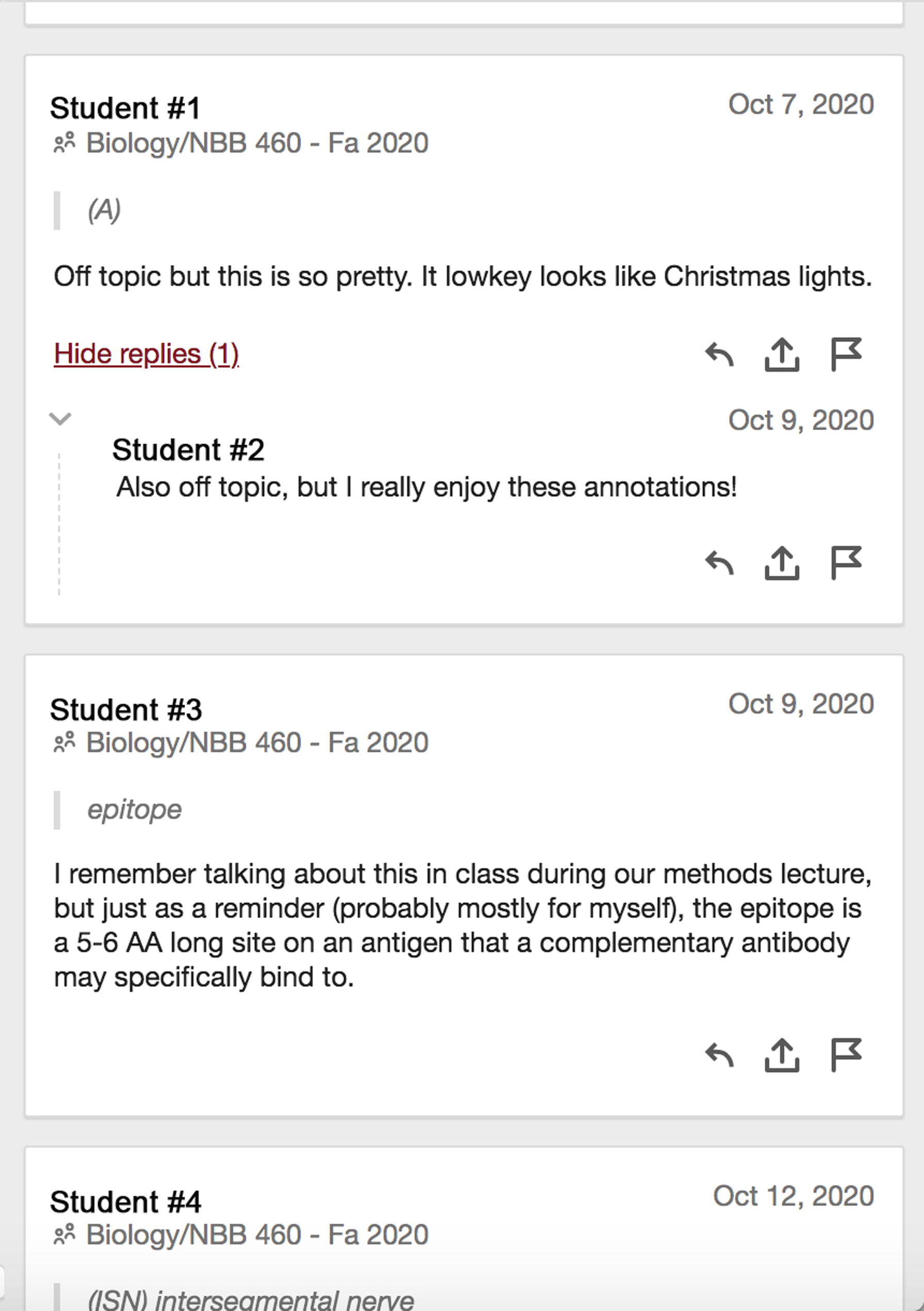
Critically reading and evaluating claims made in the primary literature are vital skills for the future professional and personal lives of undergraduate students. However, the formal presentation of intricate content in primary research articles presents a challenge to inexperienced readers. During the fall 2020 semester, I introduced a Collaborative Annotation Project (CAP) into my online 400-level developmental neurobiology course to help students critically read eight research papers. During CAP, students used collaborative annotation software asynchronously to add clarifying comments, descriptions of and links to appropriate websites, and pose and answer questions on assigned papers. Student work was guided and assessed using a CAP grading rubric. Responses to anonymous surveys revealed students found CAP helpful for reading the primary literature and the rubric clarified expectations for the project. Here, I describe how I introduced, used, and assessed CAP in my online class, and I share the detailed CAP instructions and rubric.
Primary image: A moment of levity while annotating primary literature. Sample student annotations from the Collaborative Annotation Project. Student #1 compares immunofluorescence data to Christmas lights, an observation appreciated by student #2. Student names have been removed.